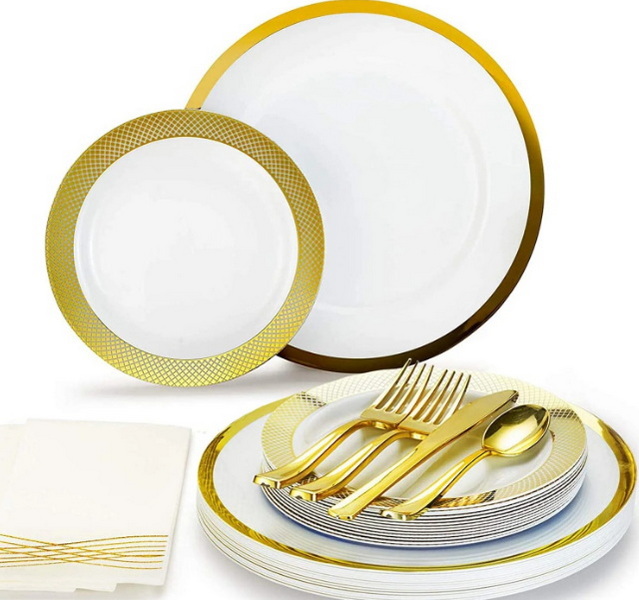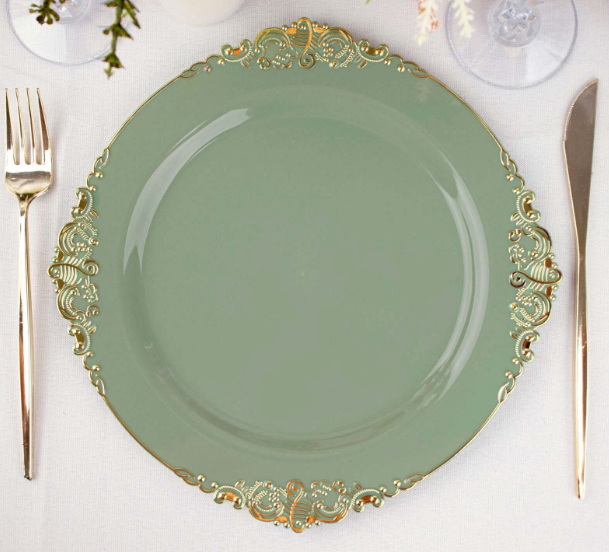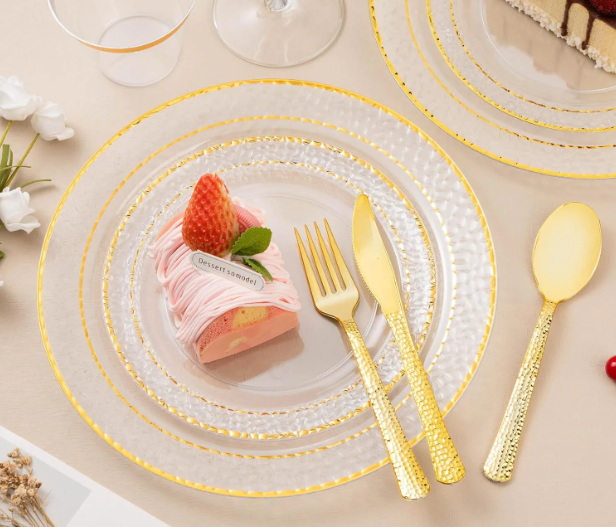
Content Menu
● Introduction to Rose Gold Disposable Tableware
>> Materials Used in Rose Gold Disposable Tableware
>>> Plastic Rose Gold Tableware
>>> Paper Rose Gold Tableware
● Benefits of Using Rose Gold Disposable Tableware
● Can Rose Gold Disposable Tableware Be Reused?
>> Tips for Reusing Rose Gold Disposable Tableware
● Eco-Friendly Alternatives
● Environmental Impact of Disposable Tableware
>> Reducing Waste
● Innovations in Sustainable Tableware
>> Future of Rose Gold Disposable Tableware
● Conclusion
● FAQ
>> 1. What Materials Are Used for Rose Gold Disposable Tableware?
>> 2. Can All Types of Rose Gold Disposable Tableware Be Reused?
>> 3. How Do I Clean Rose Gold Disposable Tableware for Reuse?
>> 4. Are There Eco-Friendly Alternatives to Rose Gold Disposable Tableware?
>> 5. What Are the Benefits of Using Rose Gold Disposable Tableware?
In recent years, rose gold disposable tableware has become increasingly popular for its elegant appearance and convenience in event settings. However, the question remains whether these items can be reused, and if so, how to do it effectively while maintaining their aesthetic appeal. This article will delve into the world of rose gold disposable tableware, exploring its materials, benefits, and potential for reuse.

Introduction to Rose Gold Disposable Tableware
Rose gold disposable tableware is designed to add a touch of sophistication to any event, from weddings to casual gatherings. It includes a variety of items such as plates, cups, utensils, and napkins, all adorned with a distinctive rose gold finish. This aesthetic appeal makes it a favorite among event planners and hosts seeking to create a memorable and stylish atmosphere.
Materials Used in Rose Gold Disposable Tableware
The materials used for rose gold disposable tableware vary, but they are often made from plastic or paper products coated with a metallic finish. Plastic items, such as plates and utensils, are durable but generally not reusable due to their disposable nature. Paper products, like paper plates and cups, are more eco-friendly but also not designed for reuse.
Plastic Rose Gold Tableware
Plastic rose gold disposable tableware is made from various types of plastics, including PET (Polyethylene Terephthalate) and PP (Polypropylene). While these materials are durable, they are typically not reusable due to their design for single use. However, some high-quality plastic items might be washed and reused if they are made from thicker, more durable materials.
Paper Rose Gold Tableware
Paper-based rose gold disposable tableware is often coated with a thin layer of wax or plastic to enhance durability. However, these coatings can affect recyclability and reuse. Paper products are generally more eco-friendly than plastic but are less durable and not suitable for washing or reuse.
Benefits of Using Rose Gold Disposable Tableware
Despite the question of reuse, rose gold disposable tableware offers several benefits:
1. Convenience: It eliminates the need for washing dishes after events, saving time and effort.
2. Aesthetic Appeal: The rose gold finish adds elegance to any setting, making it ideal for formal and informal events.
3. Versatility: Available in various styles and materials, it can complement any event theme.
Can Rose Gold Disposable Tableware Be Reused?
While rose gold disposable tableware is designed for single use, some items can be reused under certain conditions:
1. Cleaning and Maintenance: Items must be thoroughly cleaned and dried to prevent bacterial growth.
2. Material Durability: Only durable materials like certain plastics can withstand reuse.
3. Aesthetic Considerations: Reuse may affect the appearance, as the rose gold finish can wear off.
Tips for Reusing Rose Gold Disposable Tableware
If you decide to reuse rose gold disposable tableware, follow these steps:
1. Clean Thoroughly: Use mild soap and water to clean the items.
2. Dry Completely: Ensure all items are completely dry to prevent moisture accumulation.
3. Store Properly: Store items in a dry place to maintain their condition.

Eco-Friendly Alternatives
For those concerned about the environmental impact of disposable tableware, eco-friendly alternatives are available:
1. Biodegradable Options: Made from plant fibers, these items decompose naturally.
2. Compostable Materials: Break down quickly in composting facilities, reducing waste.
Environmental Impact of Disposable Tableware
The use of disposable tableware, including rose gold disposable tableware, contributes to environmental issues such as plastic waste and pollution. As consumers become more environmentally conscious, there is a growing demand for sustainable alternatives.
Reducing Waste
To minimize the environmental impact, consider the following strategies:
1. Use Reusable Tableware: Opt for traditional glass, metal, or ceramic tableware when possible.
2. Choose Eco-Friendly Disposables: Select biodegradable or compostable options for events.
3. Recycle Properly: Ensure that any recyclable materials are disposed of correctly.
Innovations in Sustainable Tableware
The tableware industry is evolving with innovations in sustainable materials and designs. Companies are developing products that are not only eco-friendly but also visually appealing, offering alternatives to traditional disposable tableware.
Future of Rose Gold Disposable Tableware
As consumers become more environmentally aware, the demand for sustainable rose gold disposable tableware may increase. This could lead to the development of more eco-friendly materials that maintain the aesthetic appeal of rose gold while reducing environmental impact.
Conclusion
While rose gold disposable tableware is primarily designed for single use, some items can be reused with proper care. However, considering the environmental impact, opting for eco-friendly alternatives or traditional reusable tableware might be more sustainable in the long run.

FAQ
1. What Materials Are Used for Rose Gold Disposable Tableware?
Rose gold disposable tableware is typically made from plastic or paper products coated with a metallic finish. Plastic items include PET and PP, while paper products may have wax or plastic coatings.
2. Can All Types of Rose Gold Disposable Tableware Be Reused?
Not all types can be reused. Only durable materials like certain plastics might withstand reuse, and even then, the rose gold finish may wear off.
3. How Do I Clean Rose Gold Disposable Tableware for Reuse?
Clean the items with mild soap and water, then dry them completely to prevent bacterial growth.
4. Are There Eco-Friendly Alternatives to Rose Gold Disposable Tableware?
Yes, biodegradable and compostable options are available. These are made from organic materials that decompose naturally or in composting facilities.
5. What Are the Benefits of Using Rose Gold Disposable Tableware?
Benefits include convenience, aesthetic appeal, and versatility. It saves time on cleanup and adds elegance to any event setting.

















